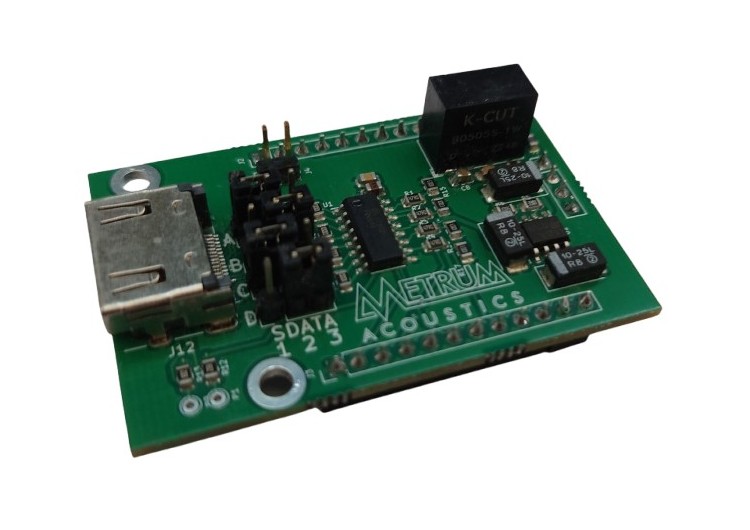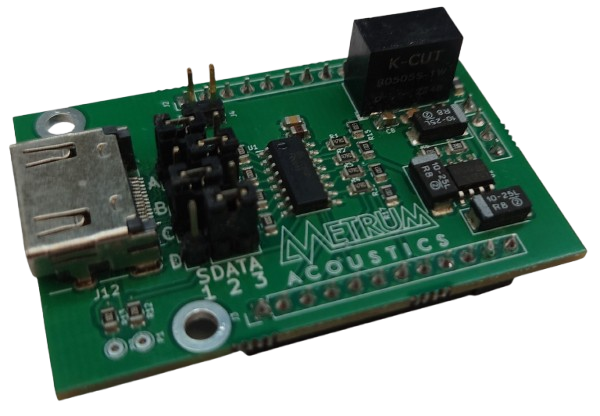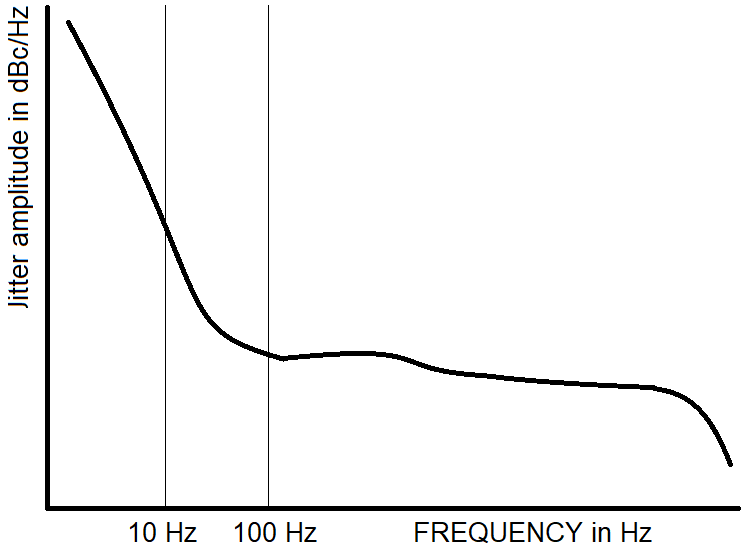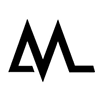Metrum Newsletter - April 2025

Let us knowMetrum Acoustics announces their new I2S over HDMI modules for both Metrum and Sonnet DACs.
Not all I2S implementations were created equal
Metrum Acoustics Newsletter - April 2025
Introduction
We're past the winter solstice on the northern hemisphere and the weather is looking up. Spring is here! Temperatures are getting better, days are becoming longer again with more light and people are already planning their Summer holidays. For us... no such thing because we have a whole lotta work to do! Nothing us Northerners can't handle though...
It's been a long time since Metrum put something new on the market. There are several reasons for that. Reinventing ourselves as a company, giving service to our customers (even to those that bought equipment second-hand), being social (Facebook and newsletters), sourcing parts and finding alternatives where needed, while keeping up with production... but... we have a small teaser for now. And... other cool stuff is yet to come.
Teaser? What is this? Prick up your ears!
I2S is historic, and now it's time for an upgrade. In digital audio equipment, I2S is the de facto standard for internally (i.e. within devices) transporting PCM audio data (that's your Music) to DAC chips. The I2S signal can also be transported between devices when care is taken in using proper cabling and termination. We have written more about I2S, its benefits and quirks in our January 2024 newsletter.
I'm listening!
Mainstream brands still opt for S/PDIF, which universally works well. Serious high-end manufacturers invest in making the I2S connection available for customers. As discussed before, a problem with using the I2S interface between devices is that "I2S" does not have an "internationally recognized standard" and a lot of devices are simply not compatible due to differences in plugs (HDMI and RJ45 plugs are not interchangeable), pinouts, voltage levels, impedance problems, and type of signaling (single-ended vs. differential - LVDS). Unfortunately, there is no universal solve-all solution to this issue (yet), as different manufacturers have made their own 'standard' and are sticking with it. Time to make audiophile life simpler and give this Medusa a proper haircut...
Don't worry, she's not staring directly at you and won't stonewall you with non-compatible I2S!
Metrum Acoustics has always relied on the RJ45 connector for the I2S interface with a specific pinout, voltage level, and impedance (a matching impedance prevents signal reflections in cables, which is genuinely bad for jitter). On our I2S page all this data is available, as well as a list of devices that are known to be compatible, or are compatible when a custom cable is used.
So... what can Metrum do to make I2S available to more customers? Expand connectivity with other devices!
A step in adding connectivity with Metrum and Sonnet equipment, as well as equipment from other manufacturers, which puts I2S on the map, which makes you happy as a customer and us happy as a manufacturer, because I2S can sound so much better! Drumroll..... Happy customers, happy Metrum.
No more suspense, we promise
We have had requests from customers all over the world to design an I2S-LVDS input board. It was also high on our wishlist, so we developed an I2S-LVDS input module for both the Metrum and Sonnet brands. Modules were prototyped and tested. Pinouts can differ between brands, so we invested in making the module as universal as possible, supporting equipment from practically all your favorite brands. A simple jumper configuration can adjust the pinout to your favorite brand or flavor. Solder bridges are also available on the bottom of the board.

Prototype of the new Metrum I2S-LVDS module
The new I2S-LVDS module is a snug fit and will fit standard HDMI plugs. Great news! What about impedance? The HDMI cable has a native impedance of 100 ohms, which means that all inputs should be terminated with 100 ohms resistors. This (to our knowledge) doesn't change in the audio industry. The impedance problem is solved!
Where the voltage level of LVDS (Low Voltage Differential Signaling) is specified at 150 mV, (0.150 volts), our new modules accept differential input voltages from 35 mV (0.035 volts for non-engineers) up to 3.3 volts (LVCMOS for the engineers), so no problems with deviant voltages anymore!
Signal pinning is corrected with jumpers or solder bridges when needed, whichever you feel most comfortable with. This means no more custom cables! Try different cables? By all means, try them all, and let us know which one you like best!
Remember that joke about a very distinctly speaking Star Wars figure that looks great in high-res? HD Am I? Gandalf's wisdom says: all high-res PCM formats shall pass through the I2S-LVDS interface, whether it be 16-bit, 24-bit, 32-bit, 44.1 kHz, or even 384 kHz!
I2S we love you, and we hope you – our readers – like this new development too...
The new I2S-LVDS input modules will be orderable shortly, for both Metrum and Sonnet DACs.
For our technophiles, a little nitty gritty on interfaces, clocking, jitter and noise:

Example phase noise plot
A digital audio system like a DAC uses bits to internally transfer digital data from sender to receiver. The clock that accompanies the data is "the boss" of when data is sent. The receiving end should always know when data is coming, and what the data means. In the case of a digital I2S signal, the digital receiver part of the DAC should know when data starts and ends, and whether the received data is for the left or right channel. This is where the LRCLK and BCLK signals help. When the LRCLK signal experiences a clock edge (rising or falling edge) the serial data sequence starts. This starting of the data perfectly coincides with the start of the conversion from Digital to Analog, so this is a very Analog and measurable phenomenon in time, even though the flipping of the LRCLK is a digital bit. This flipping of the LRCLK bit is also where problematic jitter is introduced into the chain, and where it interferes most in the listening experience.
Jitter is a time-related phenomenon, but it also has a frequency component. When taking the frequencies of the disturbances in time into account, a phase-noise plot can be made. Usually, it is harder to remove low-frequency disturbances from jitter. The phase noise plot gives more information than a single jitter figure in the pico or femtosecond range. Please note that many oscillator manufacturers only measure and integrate phase noise down to 1000 Hz, resulting in more favorable jitter figures. Audiophile clocks are usually measured and specified with integration down to 10 Hz (where jitter disturbances are highest).
When using the I2S input board, the source (streamer or transport) clock is leading. This means that if the source has a jittery clock, the end-result will also contain jitter. If the source is clean, the best end-result is reached, and you can hear the full potential of your DAC.
Fun facts:
- The first input board used in a Metrum DAC was an M2Tech HiFace OEM USB module.
- For USB, an Amanero-based module and a HiFace2 OEM module followed.
- The I2S over RJ45 interface was introduced on Metrum equipment at the end of 2017.
- The Metrum Ambre (with native I2S output) was also introduced at the end of 2017.
- UAC was introduced, which stands for USB Audio Class.
- USB had a UAC1 standard, which evolved to UAC2. No drivers are needed if both devices support UAC2.
- UAC2 has higher bandwidth and supports asynchronous and isochronous modes.
- Generally, UAC3 is not considered an audiophile step up, since it mostly concerns power efficiency for mobile devices.
- All our previous newsletters are available on the Metrum News archive.
Have a good one, keep listening to beautiful Music, and we'll talk soon.
Technical pinout jargon for the nerds:
The internet is a great source for various I2S-LVDS pinouts. Distilling that information gives the following largest common divisor for I2S-LVDS signal pinning:
SDATA + pin 1 / - pin 3 OR - pin 1 / + pin 3
BCLK + pin 4 / - pin 6
LRCLK + pin 9 / - pin 7 OR - pin 9 / + pin 7
MCLK + pin 10 / - pin 12
Note that jumpers 1 to 4 on the module must be placed; without these signal jumpers, the I2S-LVDS input module will not function.

Artwork by Paul Grill (last updated: 2025-08-04) - full size downloadable here
Equipment from most manufacturers can be coupled to the correct jumper settings. Spotted an error? Let us know and help your fellow Audiophile!
Metrum Acoustics: order the correct type of module (DACs with digital input board require the long module)
Place the Power jumper for Adagio, Pavane and Menuet. Jade, Onyx, and Amethyst with a 4-pin power connectors, don't need the Power jumper. The Amethyst and Musette without 4-pin connector need extra wires connected to the motherboard, contact us for more information.
Octave MK2 and HEX are not compatible.
Sonnet Digital Audio equipment:
For Sonnet Morpheus and Pasithea, no power jumper is needed.
Please keep in mind that it is impossible for us to make a complete list of all equipment from all manufacturers and that differences can be present between manufacturers. Jumper settings can be changed using the table above.
Some manufacturers send DSD-encoded signals over the LVDS port. Metrum and Sonnet DACs work with PCM content only. Streamers that accept PCM content and convert all data to DSD data are not compatible with Metrum and Sonnet devices: DSD will not work. However, processing DSD to PCM can be done in most streamers, yielding excellent results.
Impedance should be 100 Ohms. If a third-party manufacturer doesn't adhere to the 100 Ohm standard, the I2S connection might not work as intended, resulting in noise, dropouts, or no signal at all. The signal voltage on the LVDS connectors should be between 0.035 volts and 3.3 volts.
All Raspberry Pi-based streamers that have the WM8804 or WM8805 on board need the setting "I2S DAC ON" and "HiFiBerry Digi+ Pro".
My brand is not listed or didn't publish a pinout:
If the Left and Right audio channels are switched, change the position of the A and B jumper from 1 to 2 and vice versa.
If the phase of the analog output is reversed, change the position of the C and D jumper from 1 to 2 and vice versa.
If you have a question regarding compatibility, don't hesitate to message us. If you have a working configuration, please share your experience via message or our Facebook page and help other customers by adding it to our list of compatible equipment.










